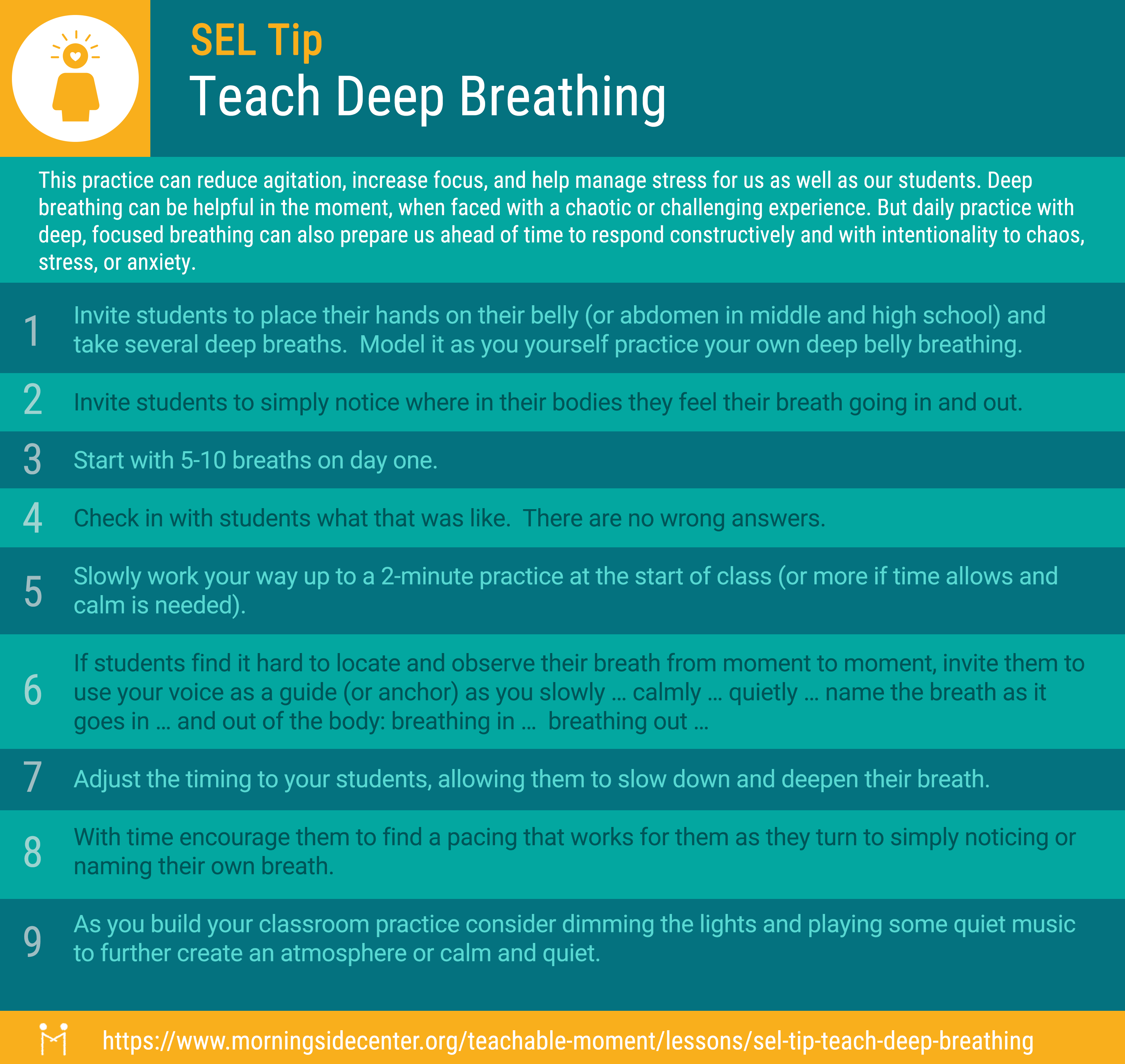Students have many reasons to be distracted. Maybe they’ve just come from differently structured activities like phys ed, music, or lunch, and are finding it hard to refocus. A hallway between classes that is crowded, chaotic, and loud, or even a simple transition between activities inside the classroom, can steer students off track and cause dysregulation. This may be especially true for students who are dealing with adverse childhood experiences and trauma.
At Morningside Center, we use a range of activities to help students calm down, center themselves, and become more focused and present. A few moments of silence or quiet journaling can enable students (and us) to take a break from the busy school day and allow the agitation in our bodies and brains to settle.
Another strategy we use is deep, focused breathing. This practice can reduce agitation, increase focus, and help manage stress for us as well as our students. Deep breathing can be helpful in the moment, when faced with a chaotic or challenging experience. But daily practice with deep, focused breathing can also prepare us ahead of time to respond constructively and with intentionality to chaos, stress, or anxiety.
Take your students through the following steps as you start your classroom practice:
- Invite students to place their hands on their belly (or abdomen in middle and high school) and take several deep breaths. Model it as you yourself practice your own deep belly breathing.
- Invite students to simply notice where in their bodies they feel their breath going in and out. Do they feel the air in their nose as it goes in, and back out? Do they feel the air going further down into their bodies, causing their belly to rise and fall?
- Start with 5-10 breaths on day one.
- Check in with students what that was like. There are no wrong answers.
- Slowly work your way up to a 2-minute practice at the start of class (or more if time allows and calm is needed).
- If students find it hard to locate and observe their breath from moment to moment, invite them to use your voice as a guide (or anchor) as you slowly … calmly … quietly … name the breath as it goes in … and out of the body:
- breathing in … breathing out …
- breathing in … breathing out …
- breathing in … breathing out …, etc.
- Adjust the timing to your students, allowing them to slow down and deepen their breath.
- With time encourage them to find a pacing that works for them as they turn to simply noticing or naming their own breath.
- As you build your classroom practice consider dimming the lights and playing some quiet music to further create an atmosphere or calm and quiet.
(Also consider this simple “stop-breathe-think” strategy as a way to calm down in the moment.)
